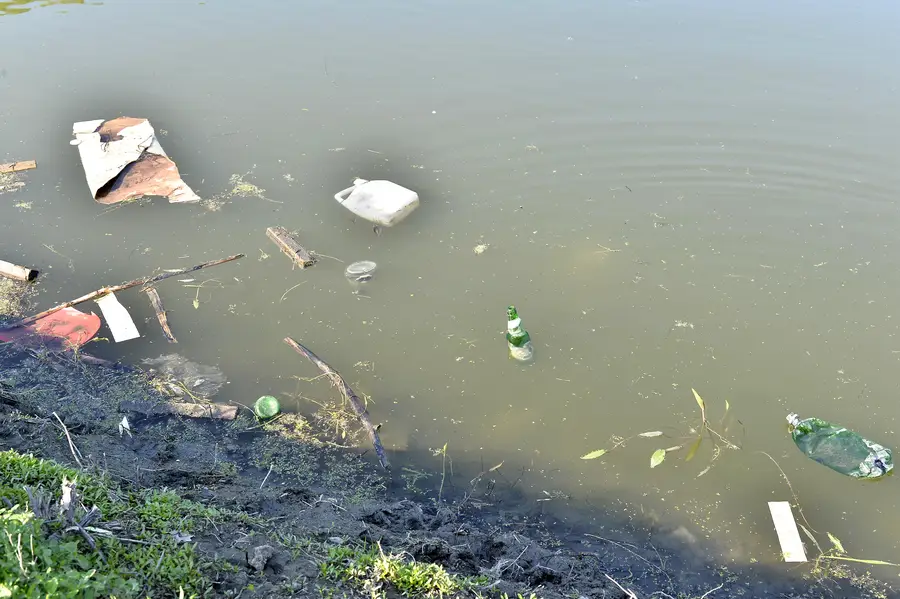
Though clean water regulations have come a long way since Ohio’s heavily polluted Cuyahoga River caught fire in 1969, current laws do not fully account for new and emerging contaminants that could harm human health, even at extremely low exposure levels.
The public outcry that followed the Cuyahoga fire prompted the United States Congress to adopt the landmark Clean Water Act (CWA) in 1972 and the Safe Drinking Water Act (SWA) two years later. The CWA regulates the discharge of pollutants and other substances known to harm human health and sets quality standards for surface waters. The SDWA seeks to protect against both natural and synthetic contaminants by authorizing the Environmental Protection Agency (EPA) to set national health-based standards for drinking water drawn from rivers, lakes, reservoirs, springs, and wells.
However, the laws are limited in important ways. Discharges into waterways from irrigation ditches or via city storm drains are not covered under the CWA. Such discharge resulted in another fire on the Cuyahoga River in 2020. And a series of newer pollutants, including pharmaceuticals and personal care products, PFAS or “forever” chemicals, microplastics, antimicrobials, and other contaminants linked to chronic health problems are not subject to either the CWA nor the SDWA. The US Geological Survey and other federal agencies are currently seeking to determine the ubiquity of these substances, identify how they enter the environment and drinking water supplies, and assess levels of exposure harmful to humans and wildlife.
Addressing Emerging Contaminants: PFAS, Pharmaceuticals, and Microplastics
Per- and polyfluoroalkyl Substances (PFAS), a group of manufactured chemicals widely used in many consumer and industrial products since the 1950s, are concerning because many of them break down slowly, accumulating in people, animals, and the environment over time. There is toxicological and epidemiological evidence of health effects affecting multiple systems, including greater risk of prostate, kidney, and testicular cancers; developmental impacts in children, such as low birth weight, accelerated puberty, bone variations, or behavioral changes; decreased fertility or increased high blood pressure in pregnant women; reduced ability of the body’s immune system to fight infections and lower vaccine response; interference with the body’s natural hormones, and higher cholesterol levels and/or risk of obesity.
While people can be exposed to PFAS from a variety of sources, including food packaging and contaminated soil and air, their presence in drinking water can result in higher exposure, especially among pregnant women and children as they tend to drink more water per pound of body weight. Infants can also be exposed through breast milk and formula made with water. RTI is currently collaborating on two comprehensive studies—the Multi-site Health Study (MSS) and Michigan PFAS Exposure and Health Study (MiPEHS)—to identify links between exposures to PFAS via drinking water and health outcomes.
Pharmaceuticals, meanwhile, enter surface waters during manufacturing and through wastewater plants, most of which do not remove drugs during the sewage treatment process. Studies suggest that some of these drugs alter the hormone system of fish, potentially resulting in reproductive failure. Other research suggests that exposure to pharmaceuticals and various chemicals in drinking water may also affect human reproductive systems.
Microplastics—the tiny particles and fibers shed from clothing, textiles, fishing nets and the breakdown of larger plastic items, like water bottles—have been found in every environment on Earth, including drinking water. Though they are extremely widespread, little is known about the potential health risks of unintentionally consuming microplastics, especially the tiniest particles, which have a greater likelihood of crossing the intestinal tract. More research is critically needed, particularly to assess risks to vulnerable populations such as children, pregnant women, and people with underlying health complications.
Looking Ahead to Modernized Regulations for Emerging Contaminants
Scientists and regulators face complex challenges in dealing with these emerging contaminants. For example, there are thousands of PFAS, each with potentially different effects and toxicity. Many of these have not been studied, and when one compound is restricted, industry often adopts another that hasn’t yet been scrutinized. It’s also difficult to assess health impacts when exposure can occur in multiple ways and at various levels throughout a person’s lifetime.
Despite these limitations, we should consider measures to reduce or eliminate the introduction of these contaminants of concern into our water supplies. For example, technology can be used to improve filtration and treatment systems and control discharge from irrigation sources and storm drains.
Prioritizing research into such contaminants will allow us to make science-based assessments about the health implications of new contaminants to inform associated public policy. If we want to ensure the protection of human and environmental health in the face of new and emerging contaminants, we must ensure future regulations reflect sound science and research.

